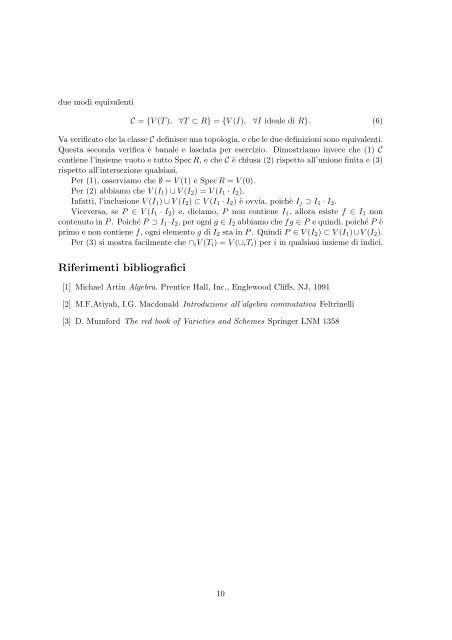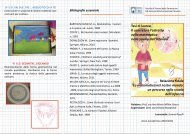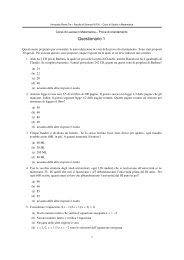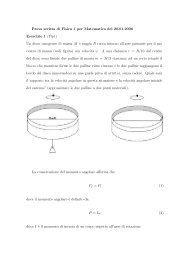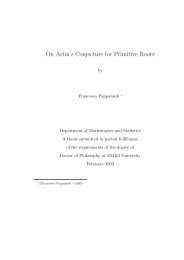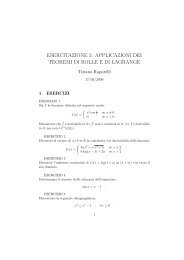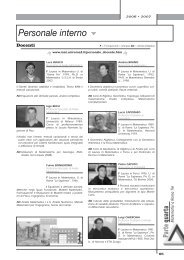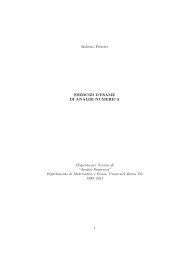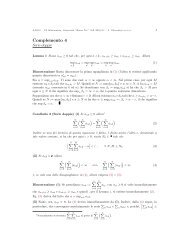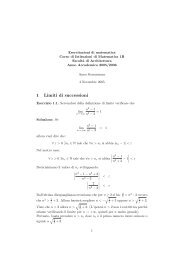Il Teorema degli zeri di Hilbert e la geometria algebrica
Il Teorema degli zeri di Hilbert e la geometria algebrica
Il Teorema degli zeri di Hilbert e la geometria algebrica
- No tags were found...
You also want an ePaper? Increase the reach of your titles
YUMPU automatically turns print PDFs into web optimized ePapers that Google loves.
due mo<strong>di</strong> equivalentiC = {V (T ), ∀T ⊂ R} = {V (I), ∀I ideale <strong>di</strong> R}. (6)Va verificato che <strong>la</strong> c<strong>la</strong>sse C definisce una topologia, e che le due definizioni sono equivalenti.Questa seconda verifica è banale e <strong>la</strong>sciata per esercizio. Dimostriamo invece che (1) Ccontiene l’insieme vuoto e tutto Spec R, e che C è chiusa (2) rispetto all’unione finita e (3)rispetto all’intersezione qualsiasi.Per (1), osserviamo che ∅ = V (1) e Spec R = V (0).Per (2) abbiamo che V (I 1 ) ∪ V (I 2 ) = V (I 1 · I 2 ).Infatti, l’inclusione V (I 1 ) ∪ V (I 2 ) ⊂ V (I 1 · I 2 ) è ovvia, poichè I j ⊃ I 1 · I 2 .Viceversa, se P ∈ V (I 1 · I 2 ) e, <strong>di</strong>ciamo, P non contiene I 1 , allora esiste f ∈ I 1 noncontenuto in P . Poiché P ⊃ I 1·I 2 , per ogni g ∈ I 2 abbiamo che fg ∈ P e quin<strong>di</strong>, poiché P èprimo e non contiene f, ogni elemento g <strong>di</strong> I 2 sta in P . Quin<strong>di</strong> P ∈ V (I 2 ) ⊂ V (I 1 )∪V (I 2 ).Per (3) si mostra facilmente che ∩ i V (T i ) = V (∪ i T i ) per i in qualsiasi insieme <strong>di</strong> in<strong>di</strong>ci.Riferimenti bibliografici[1] Michael Artin Algebra. Prentice Hall, Inc., Englewood Cliffs, NJ, 1991[2] M.F.Atiyah, I.G. Macdonald Introduzione all’algebra commutativa Feltrinelli[3] D. Mumford The red book of Varieties and Schemes Springer LNM 135810


